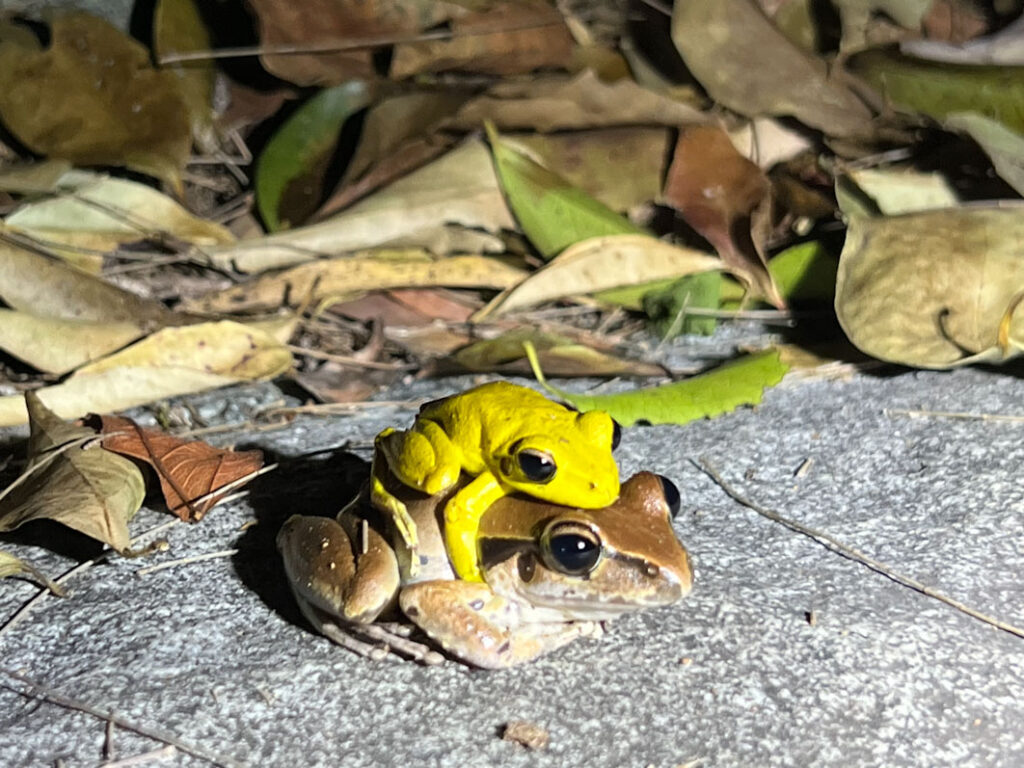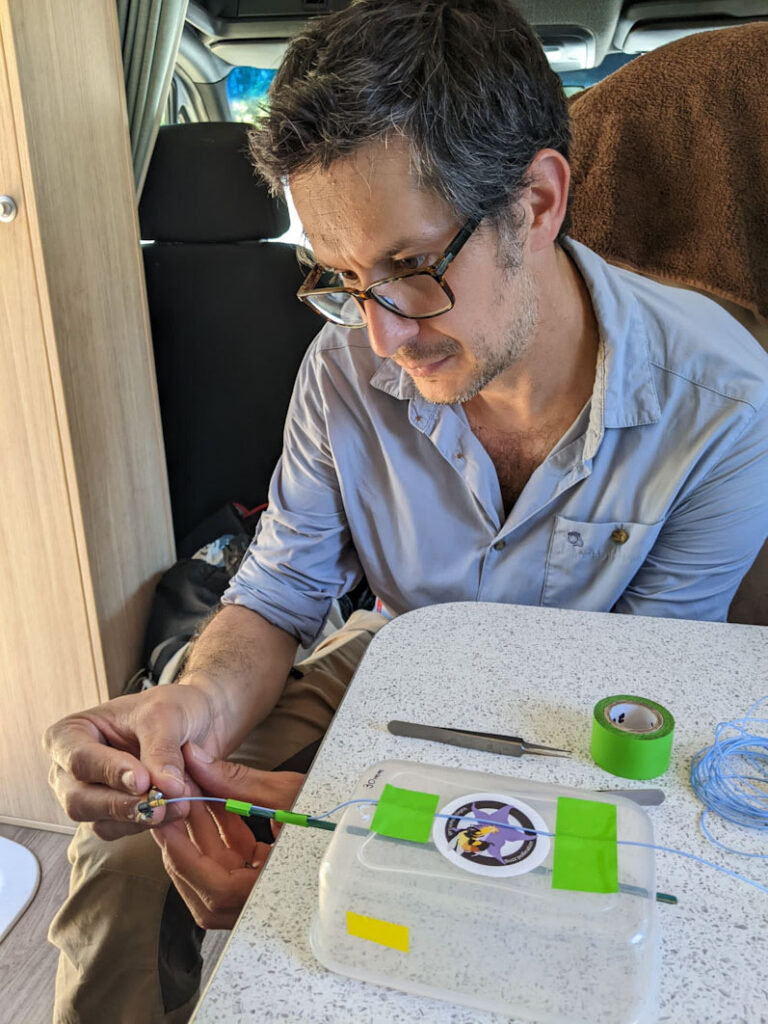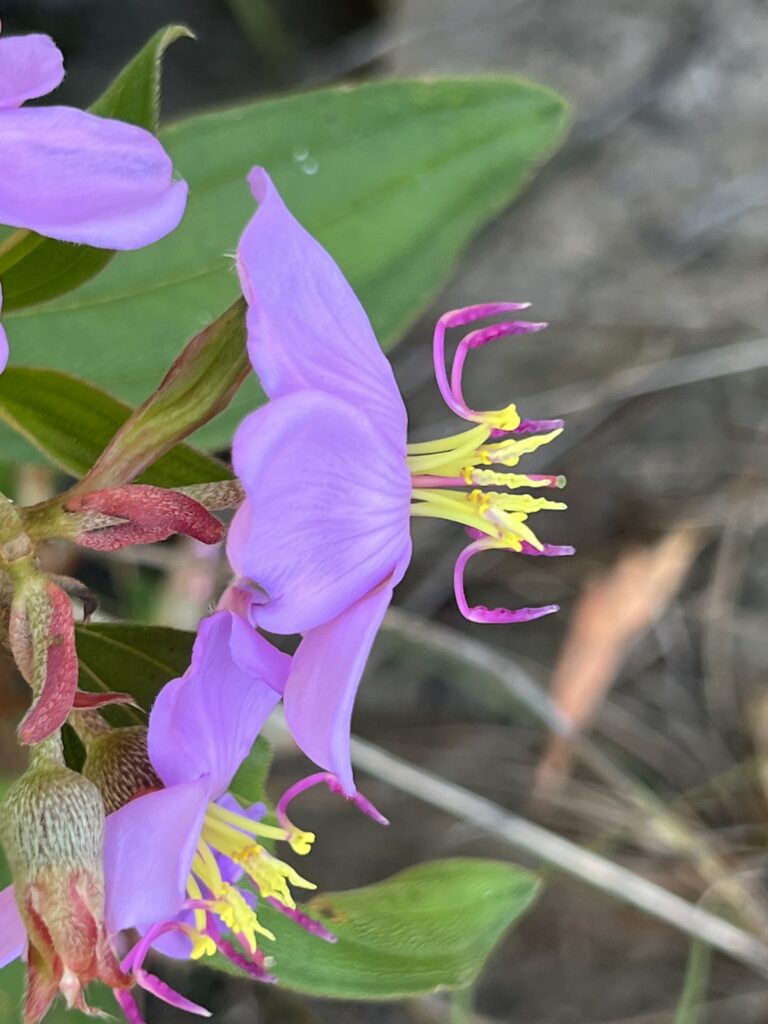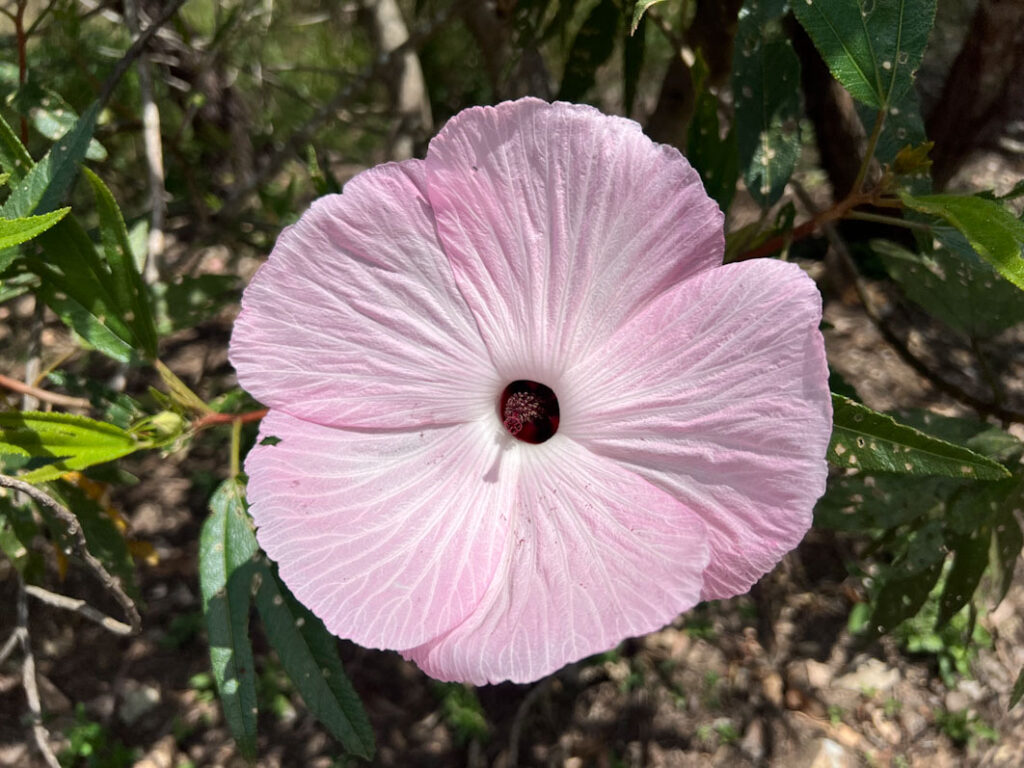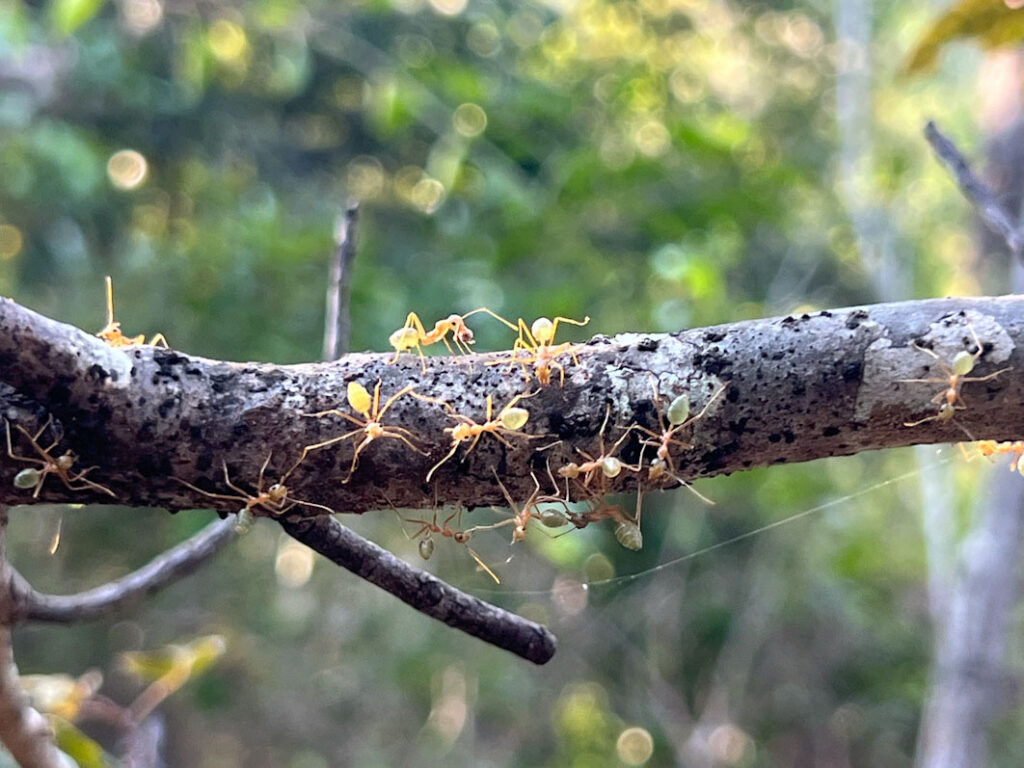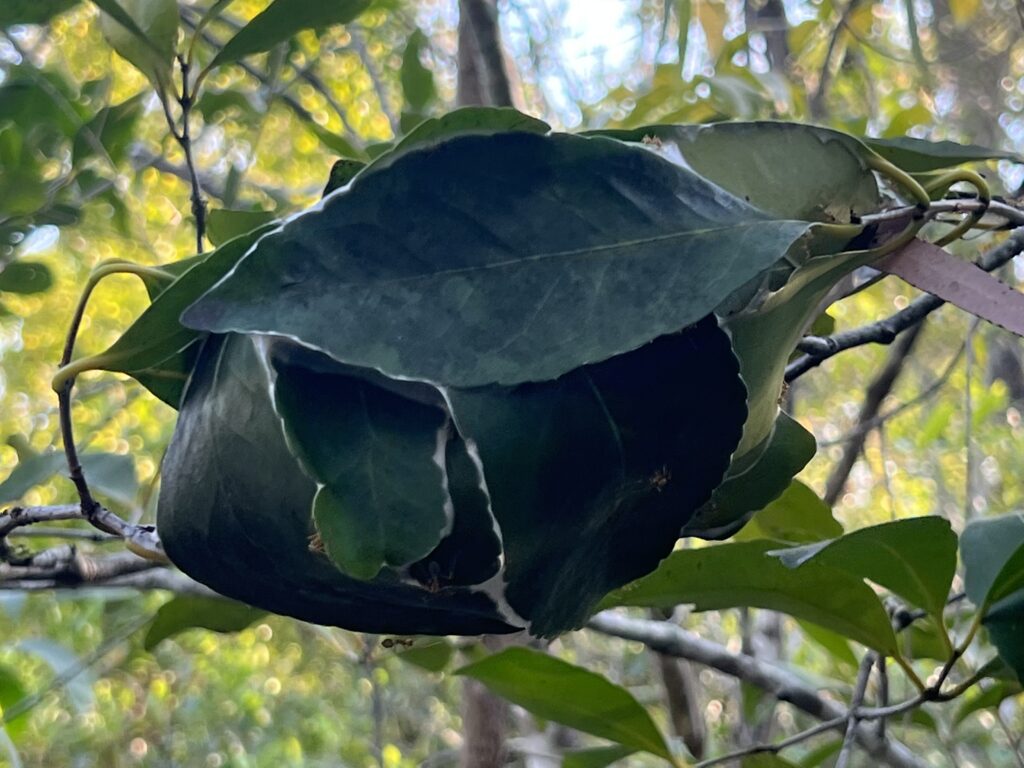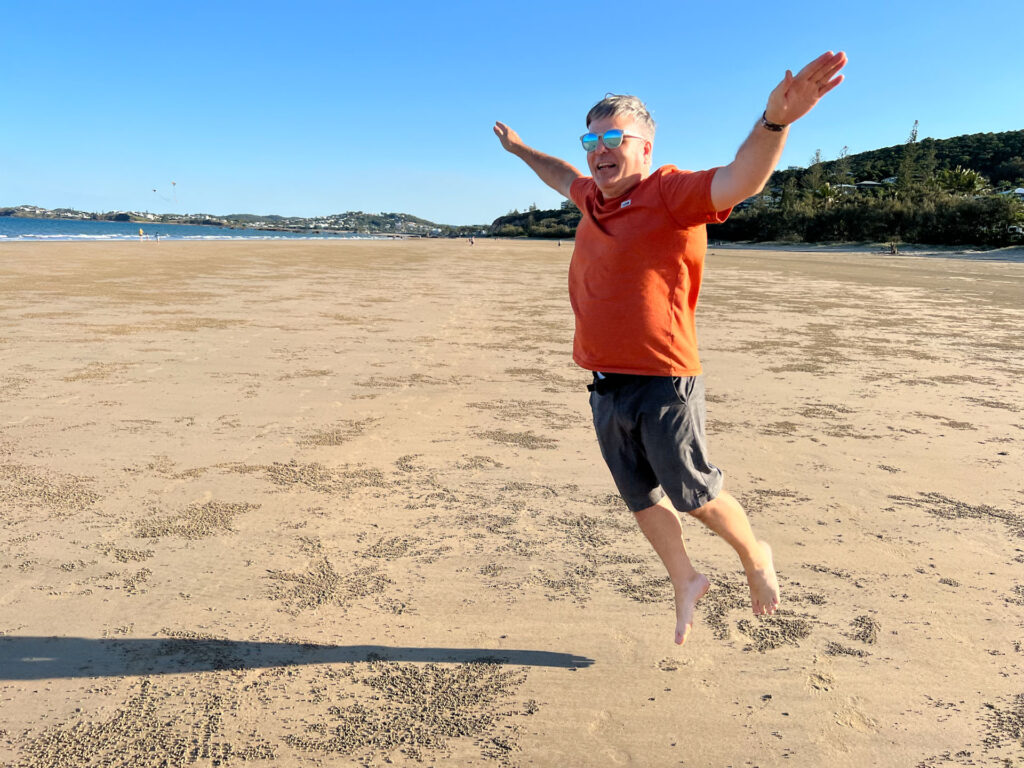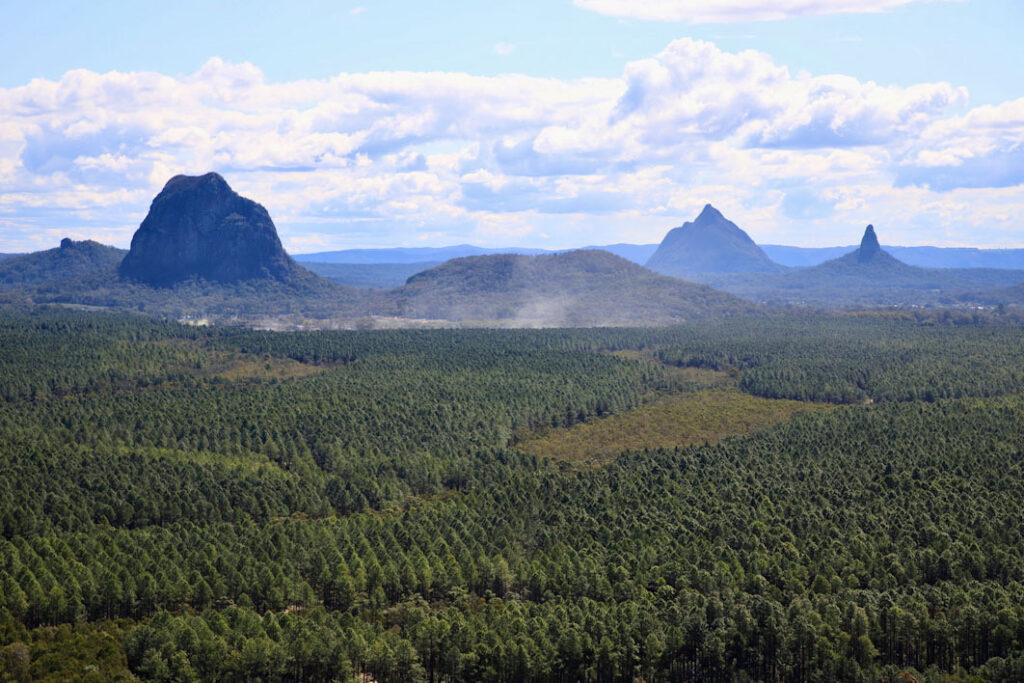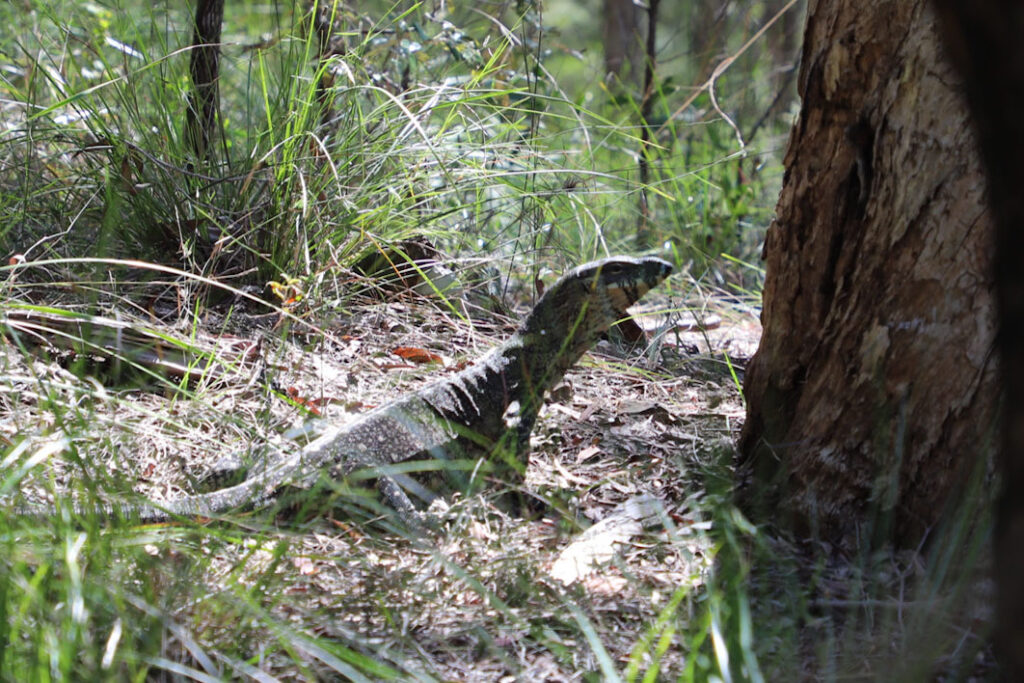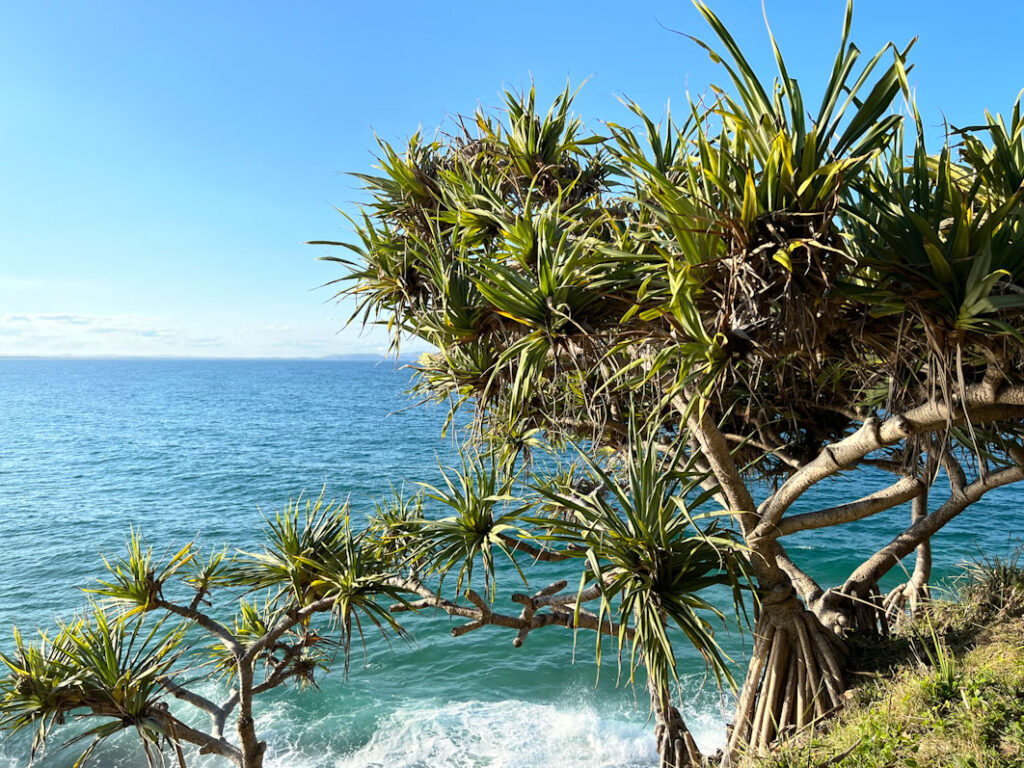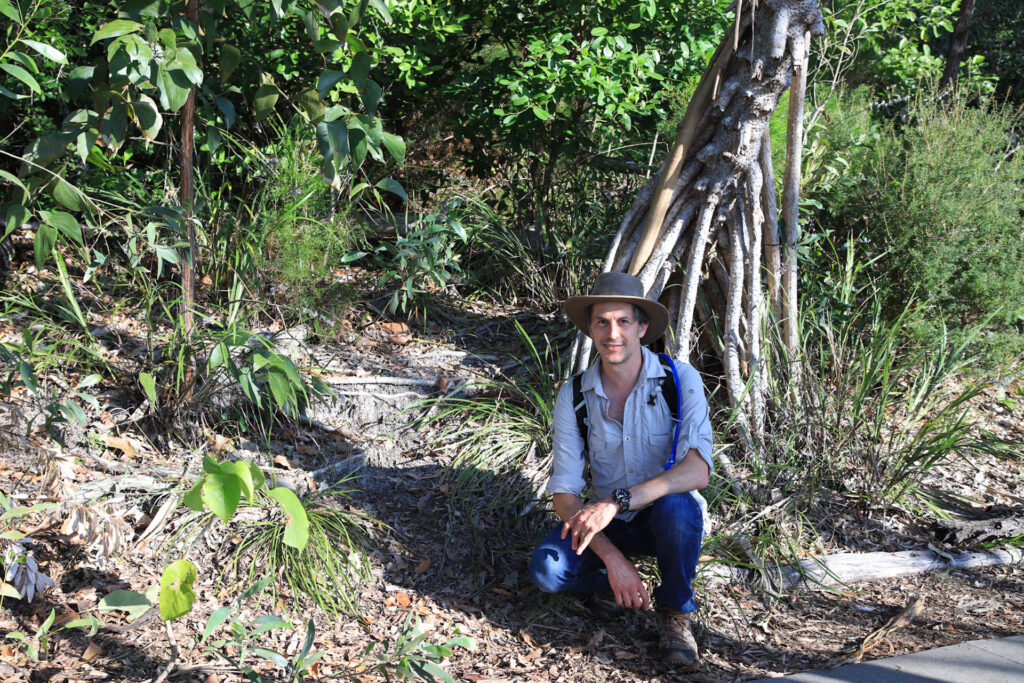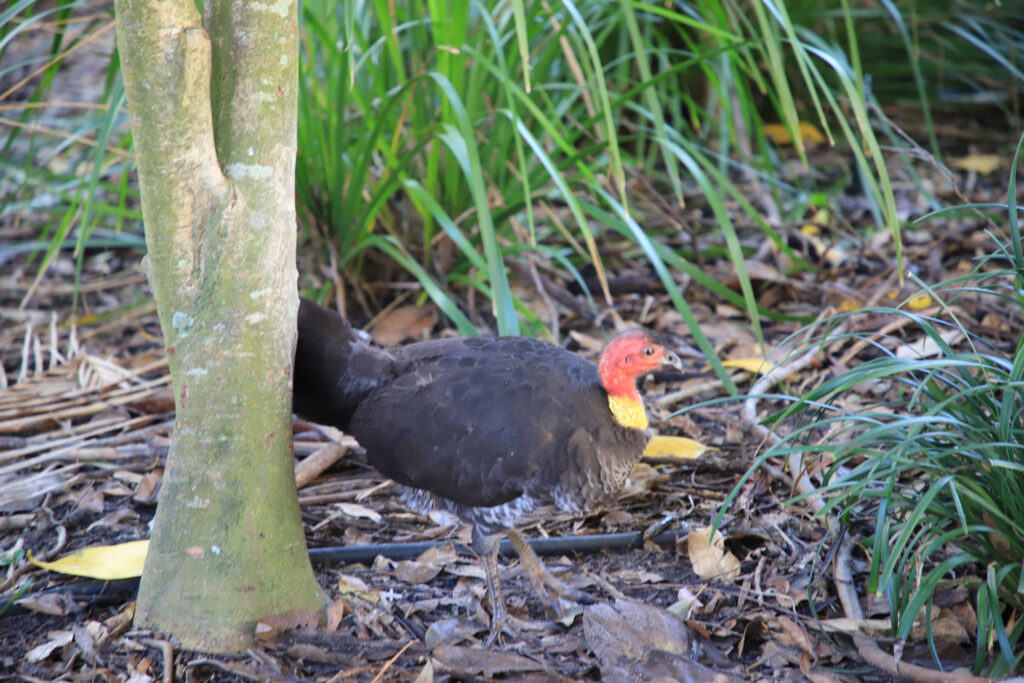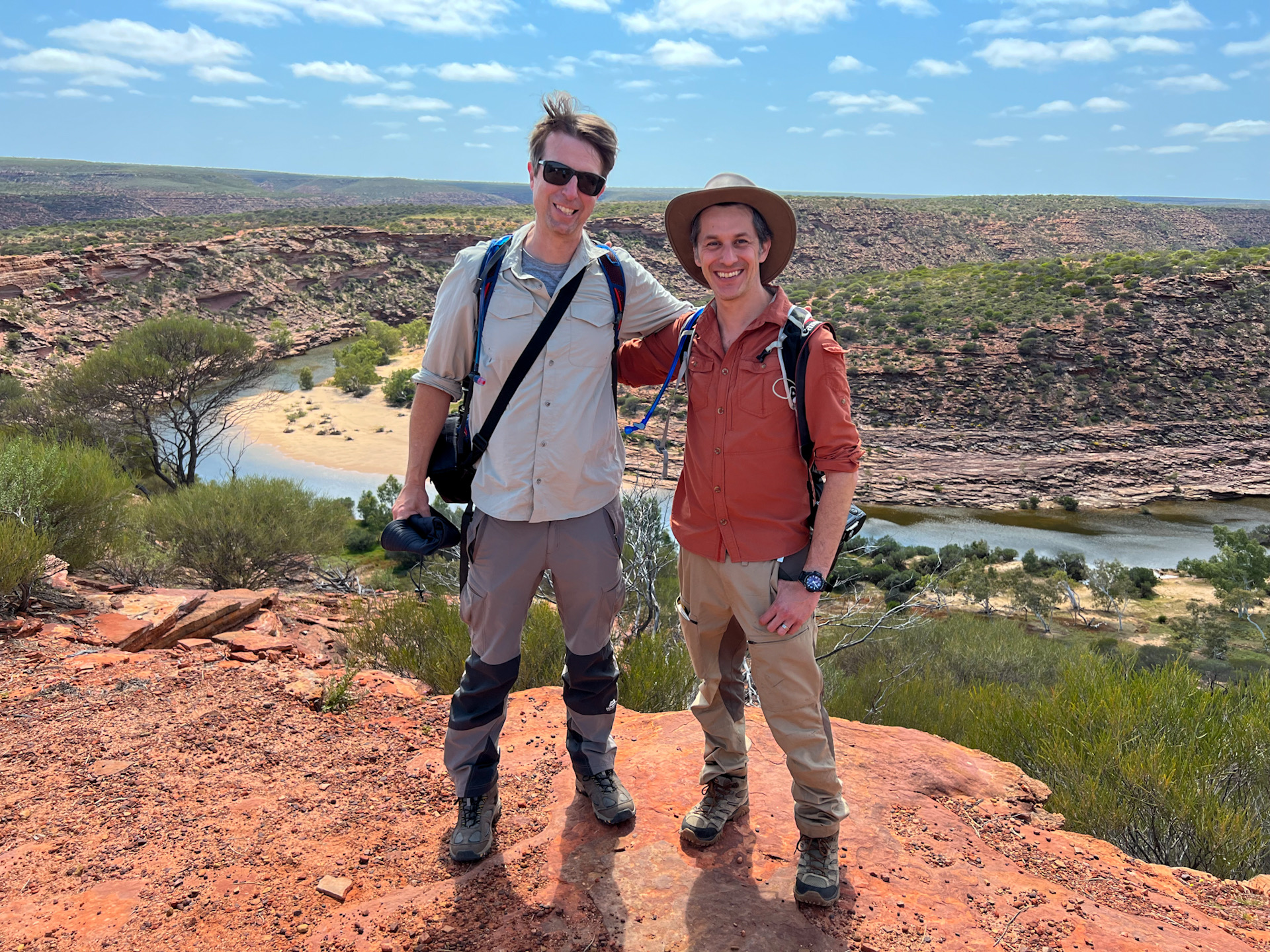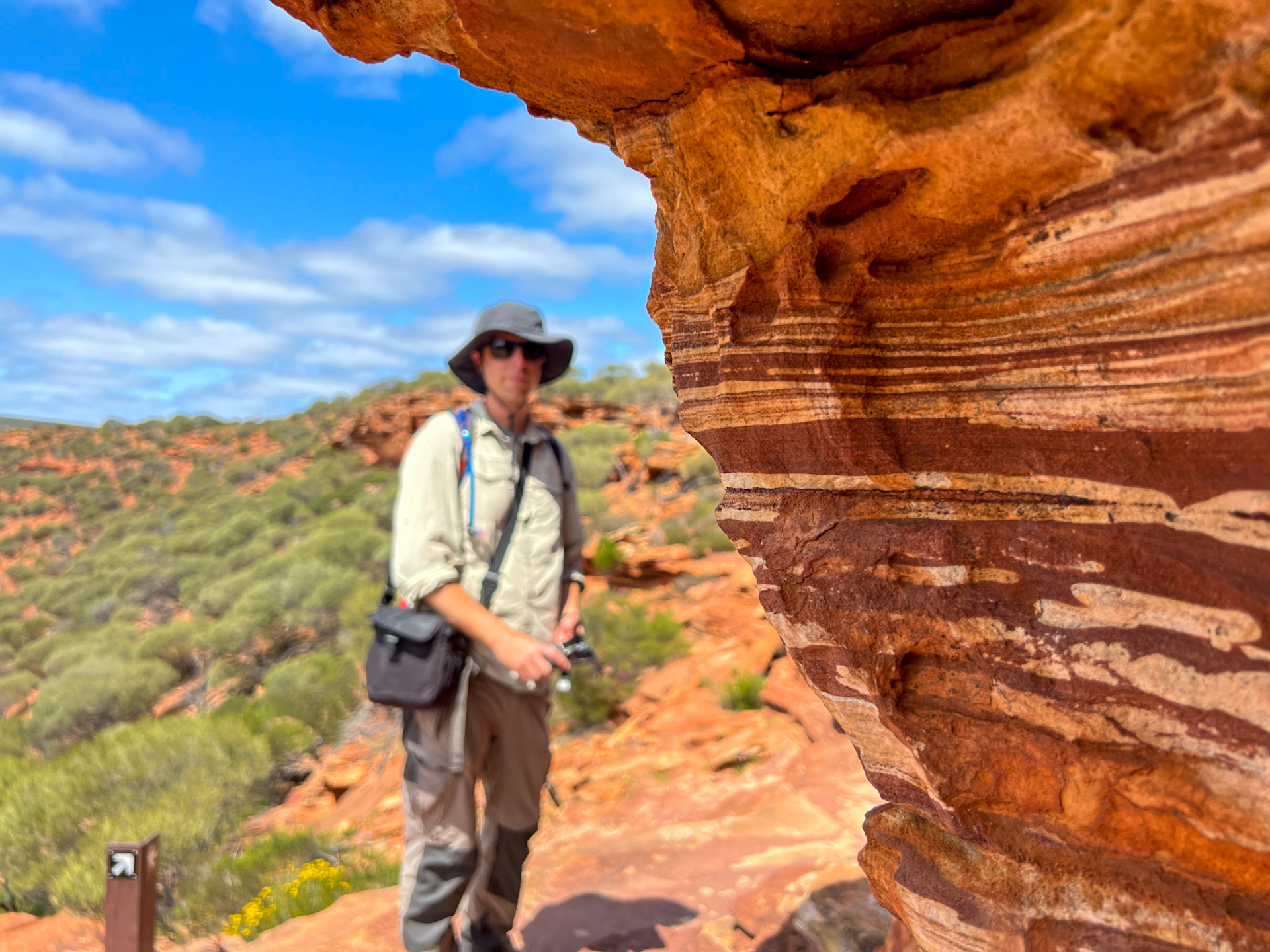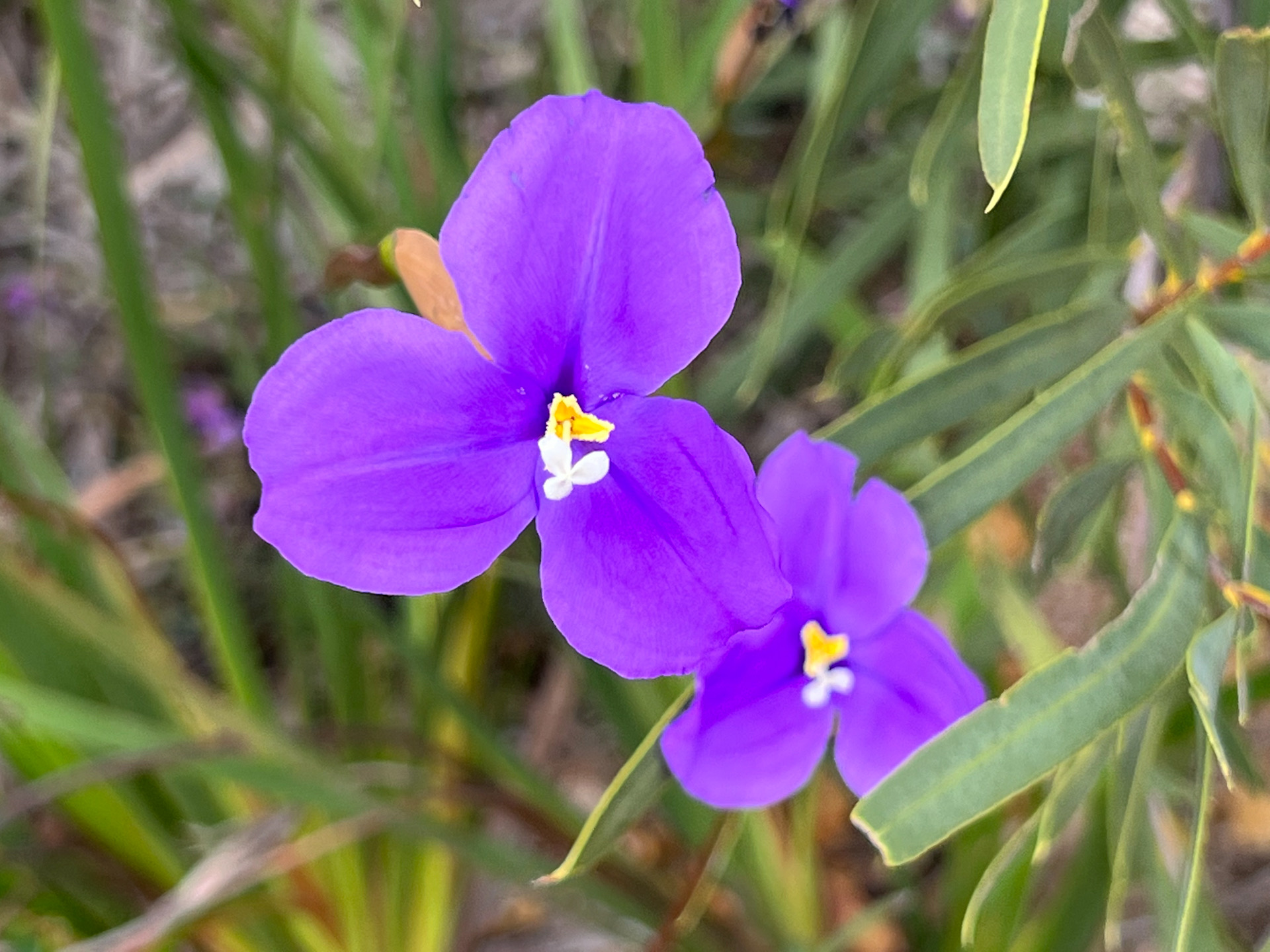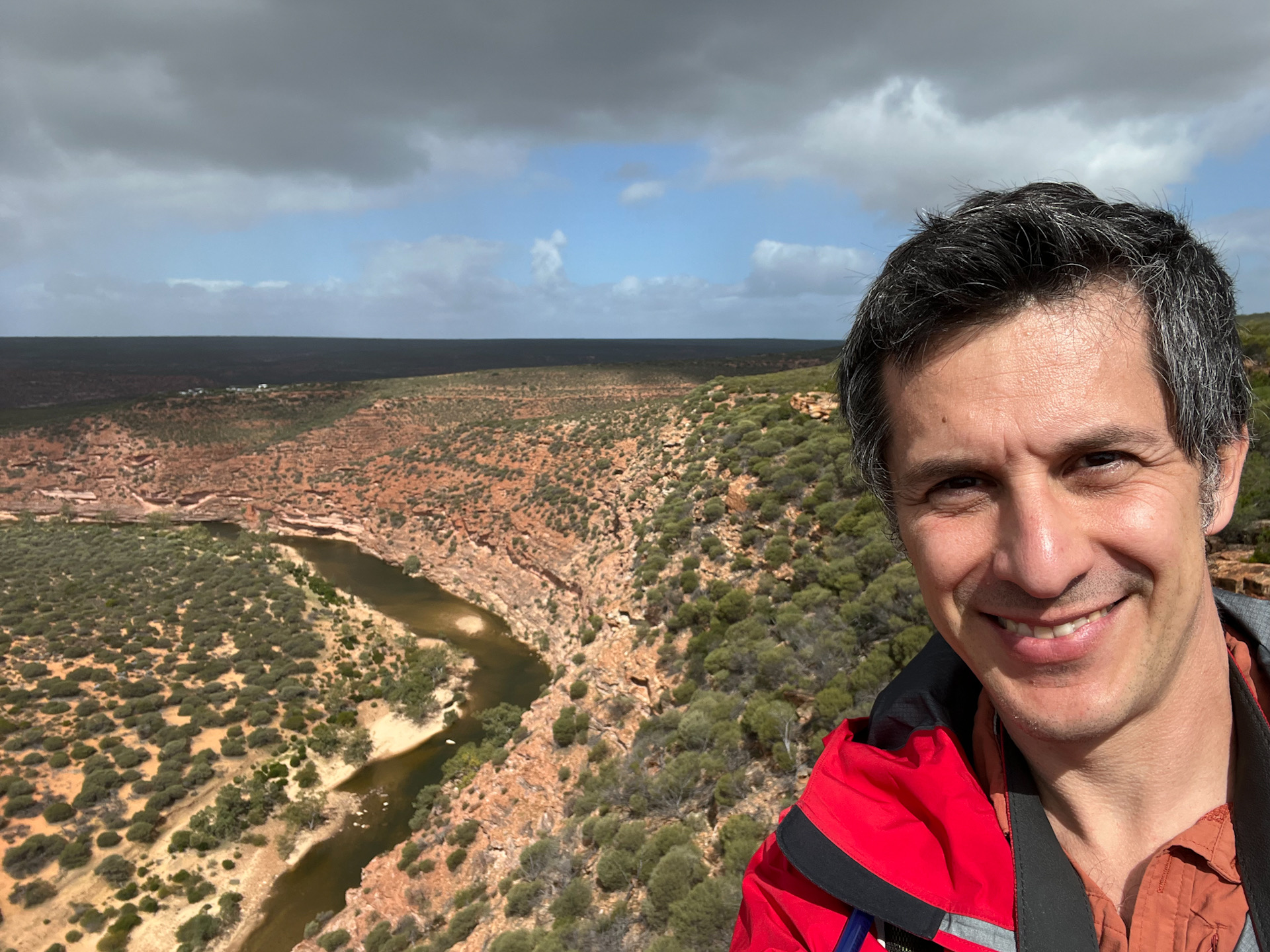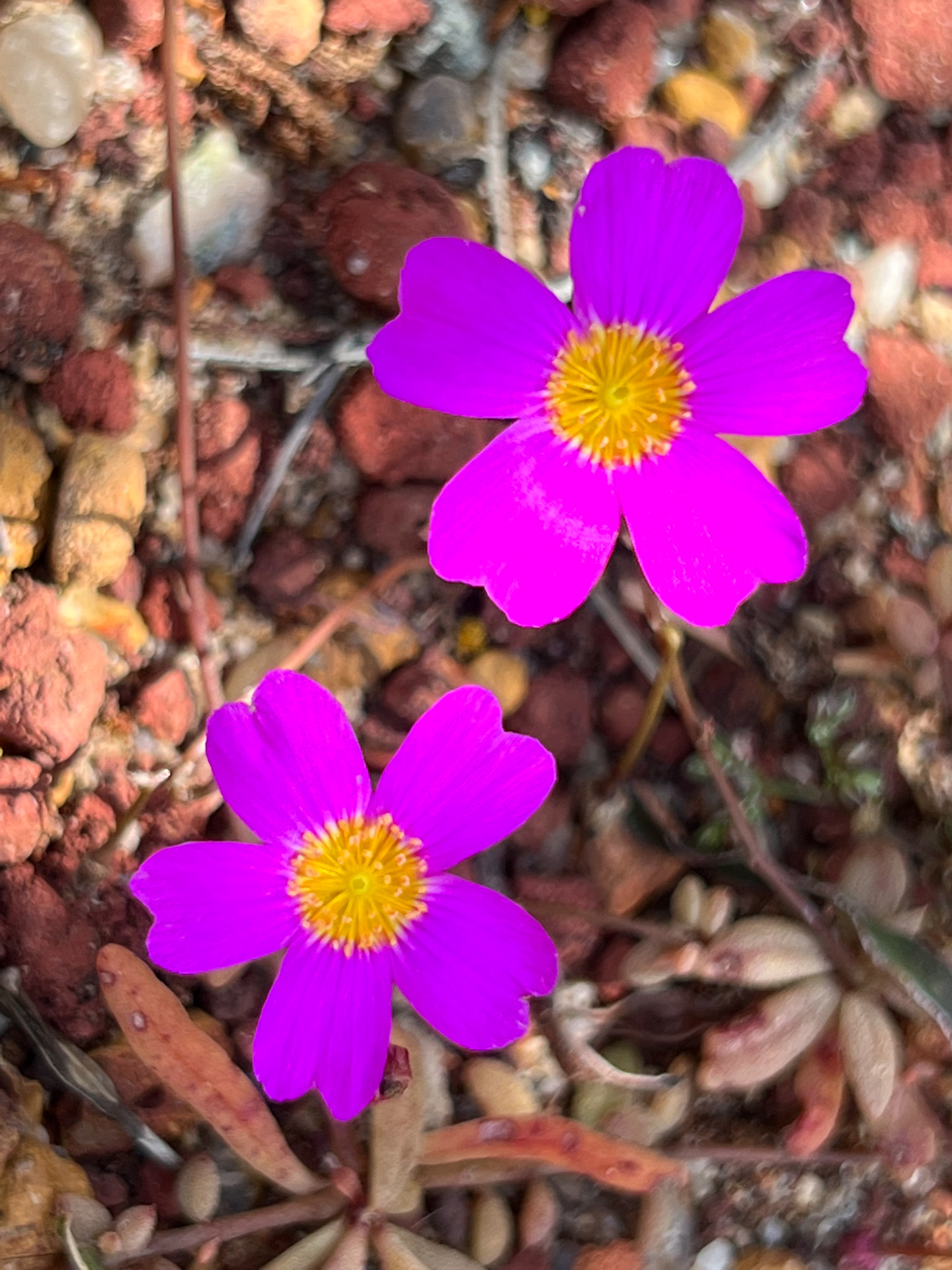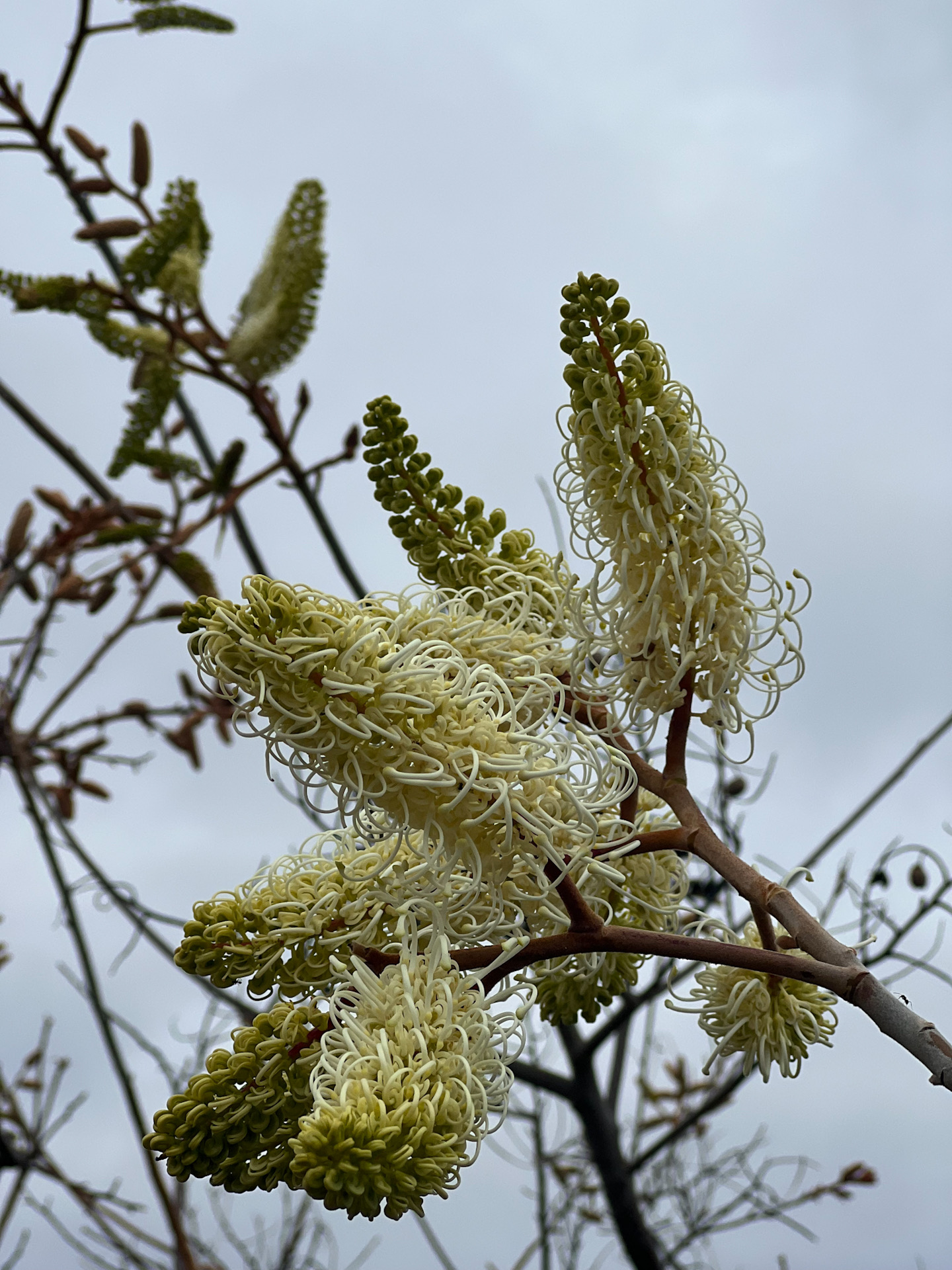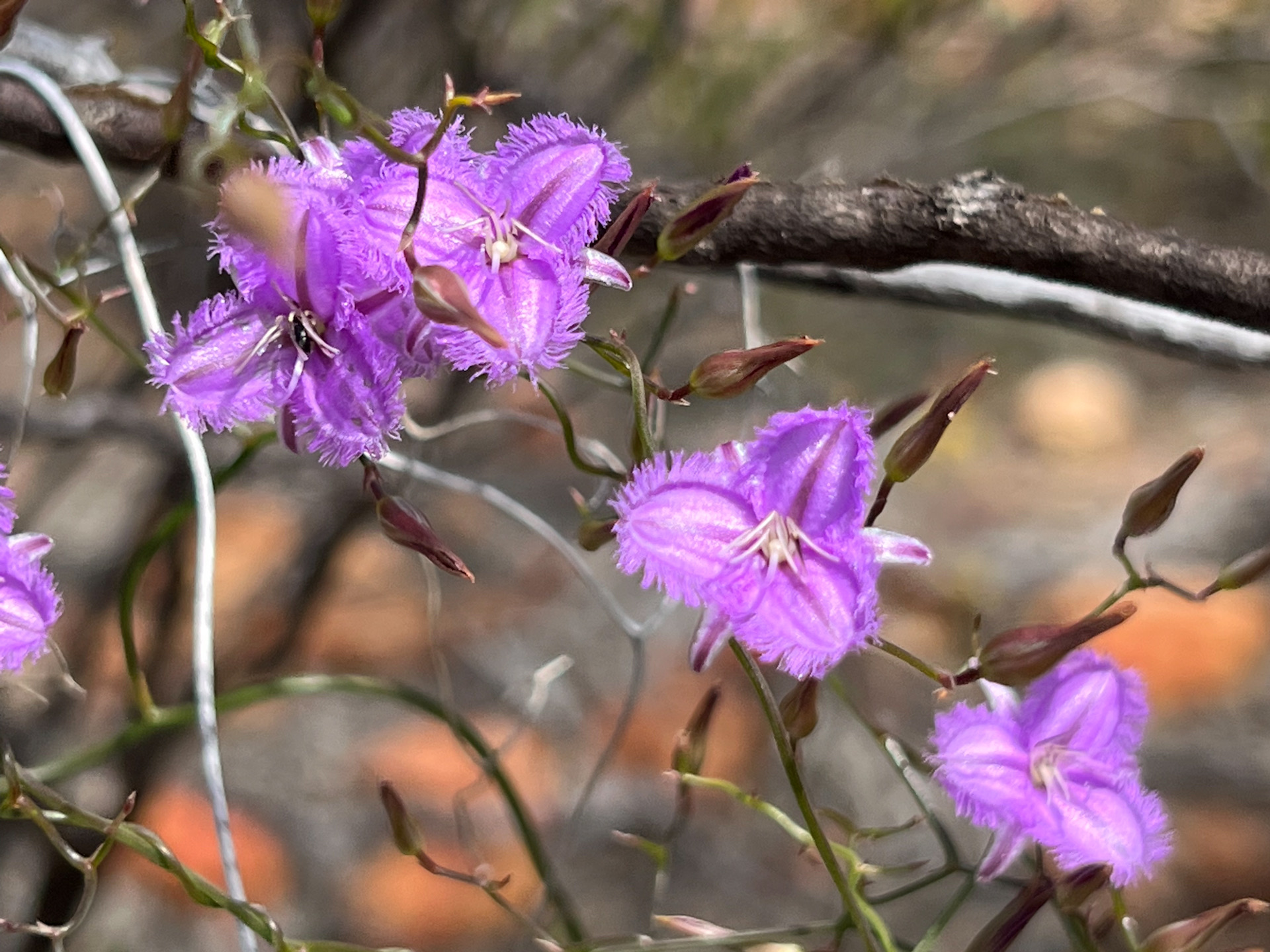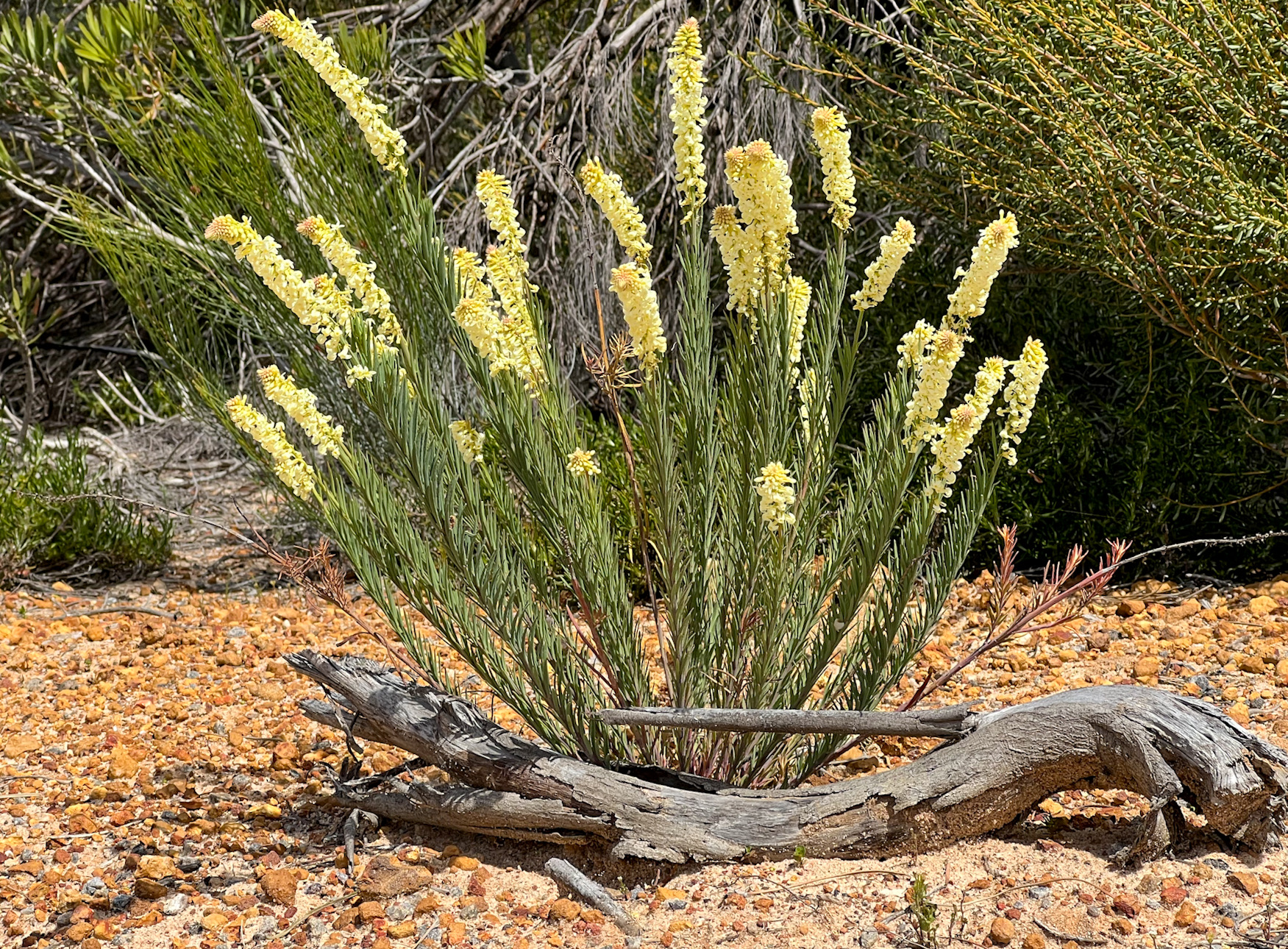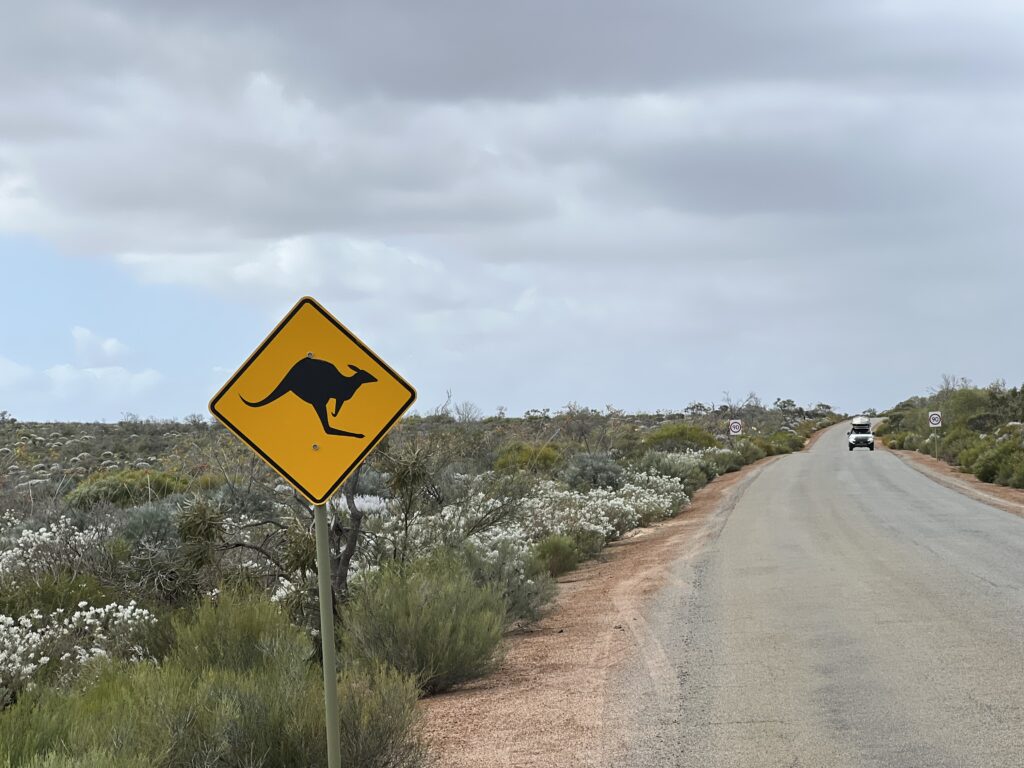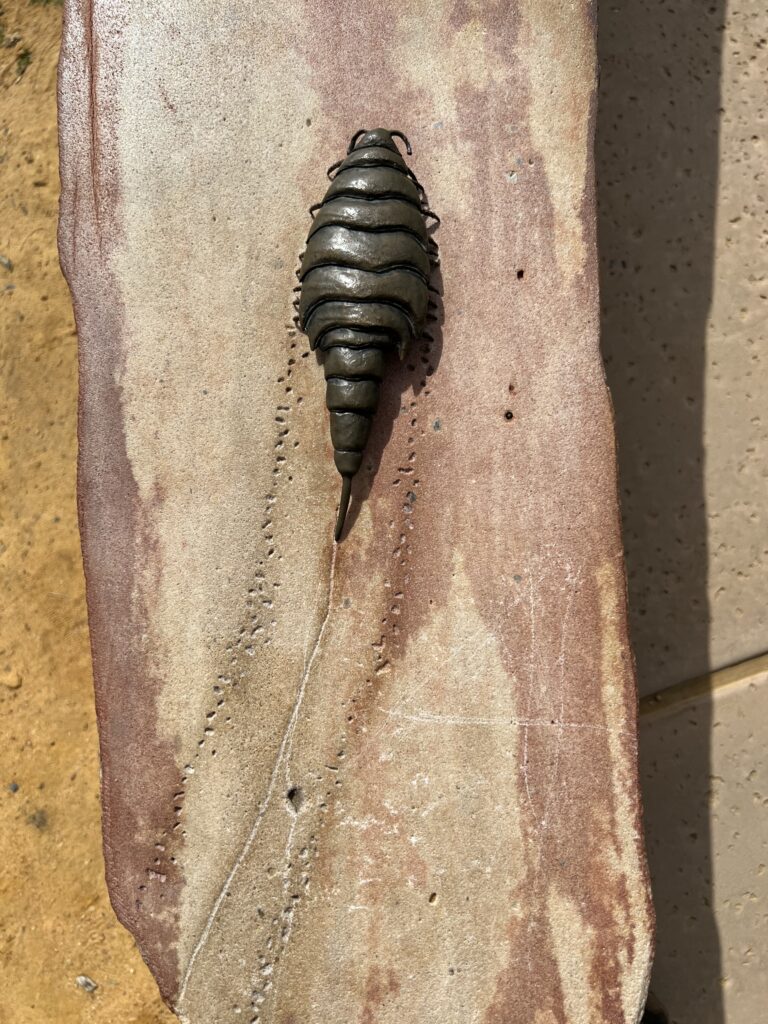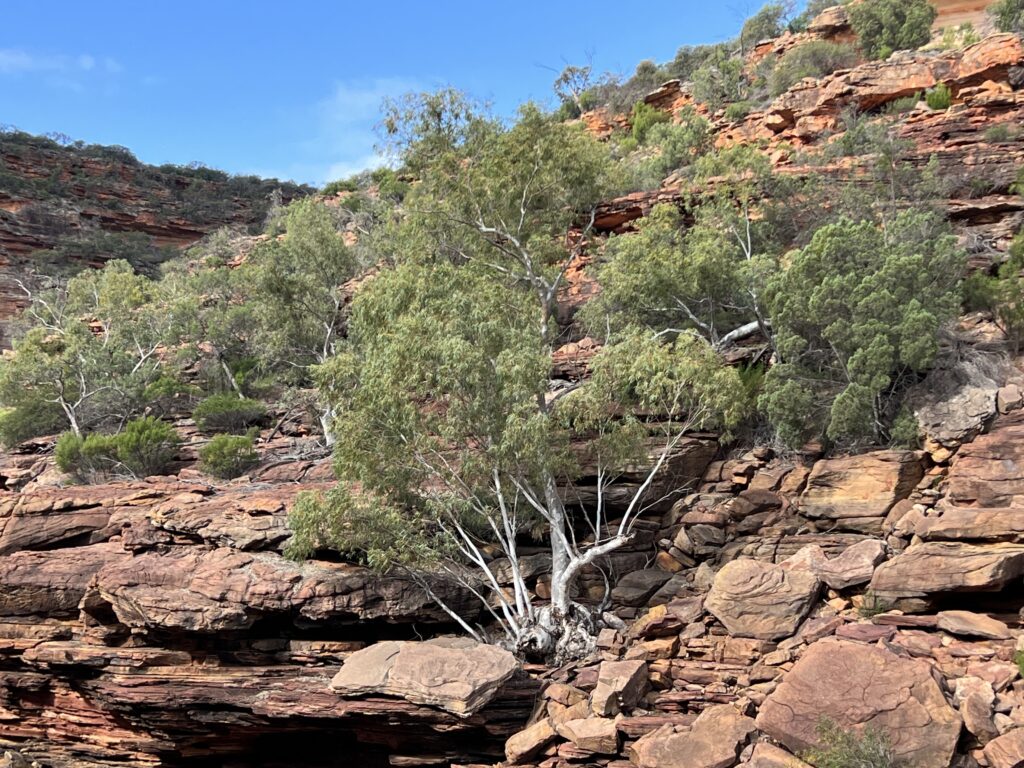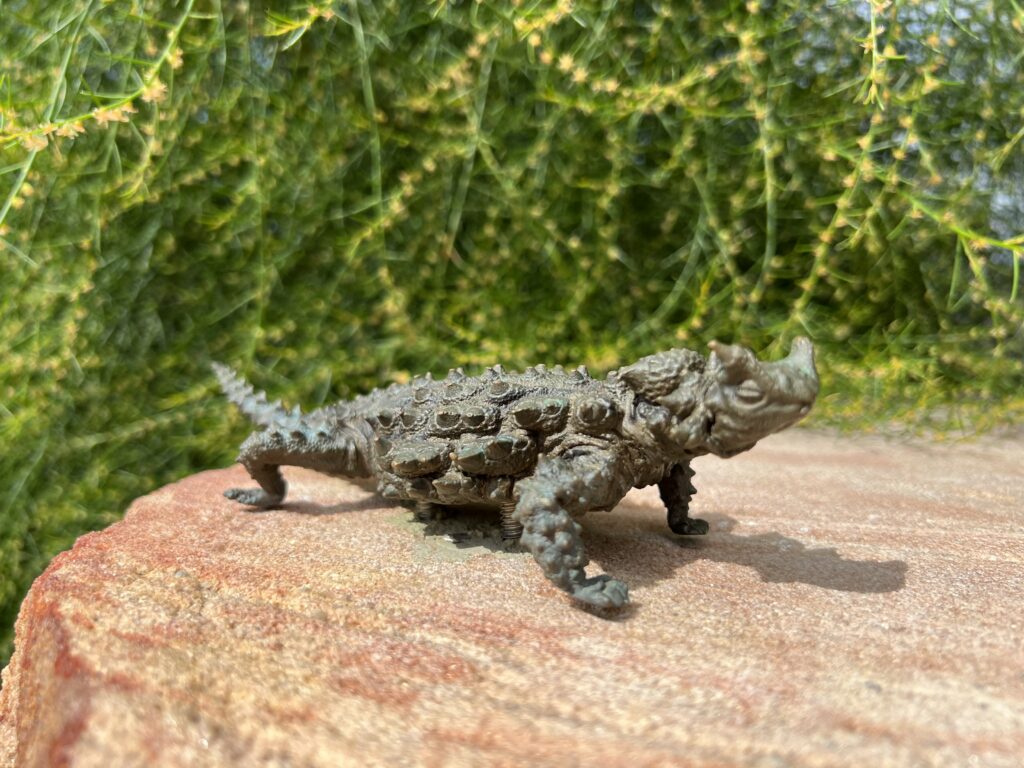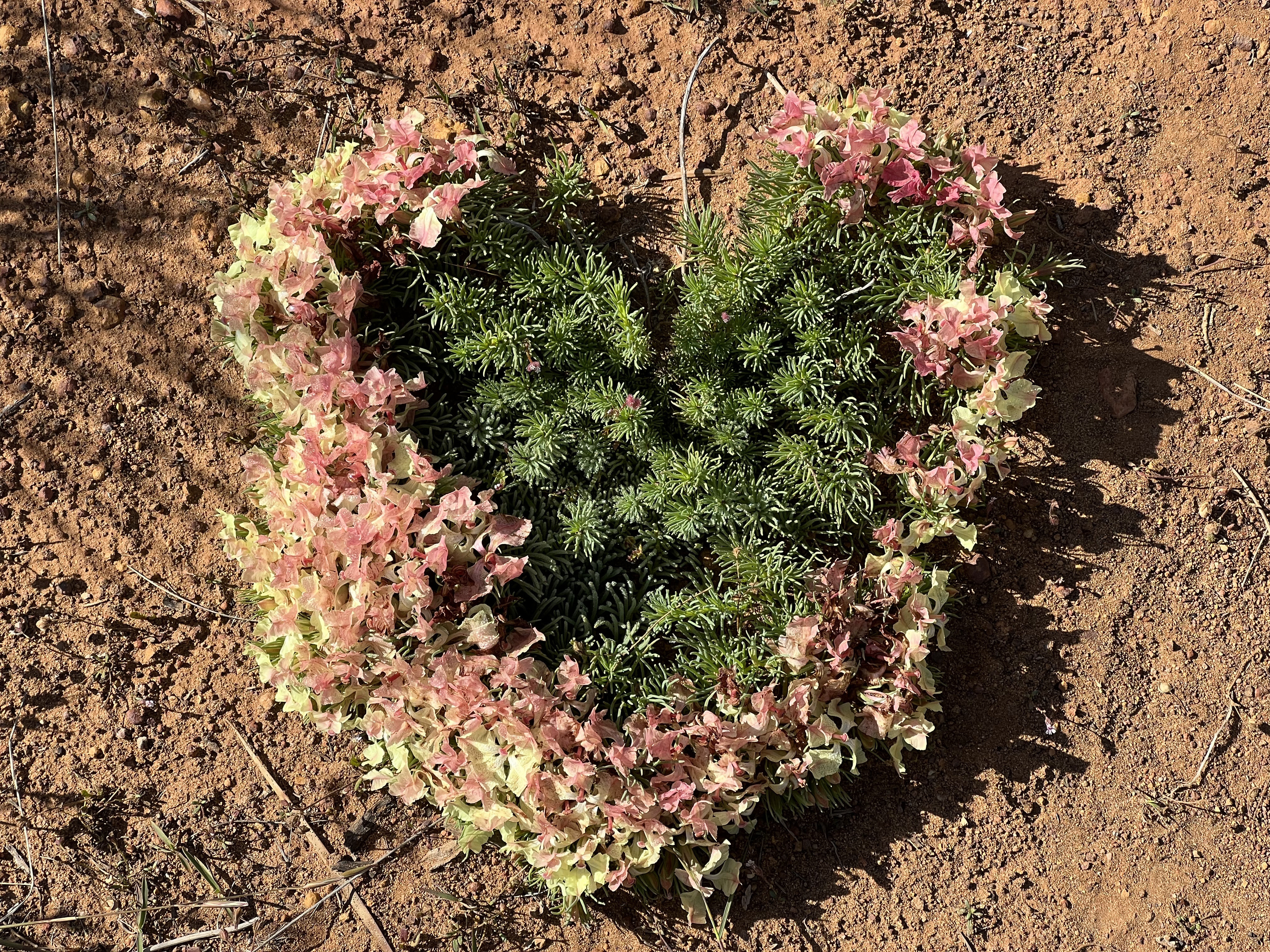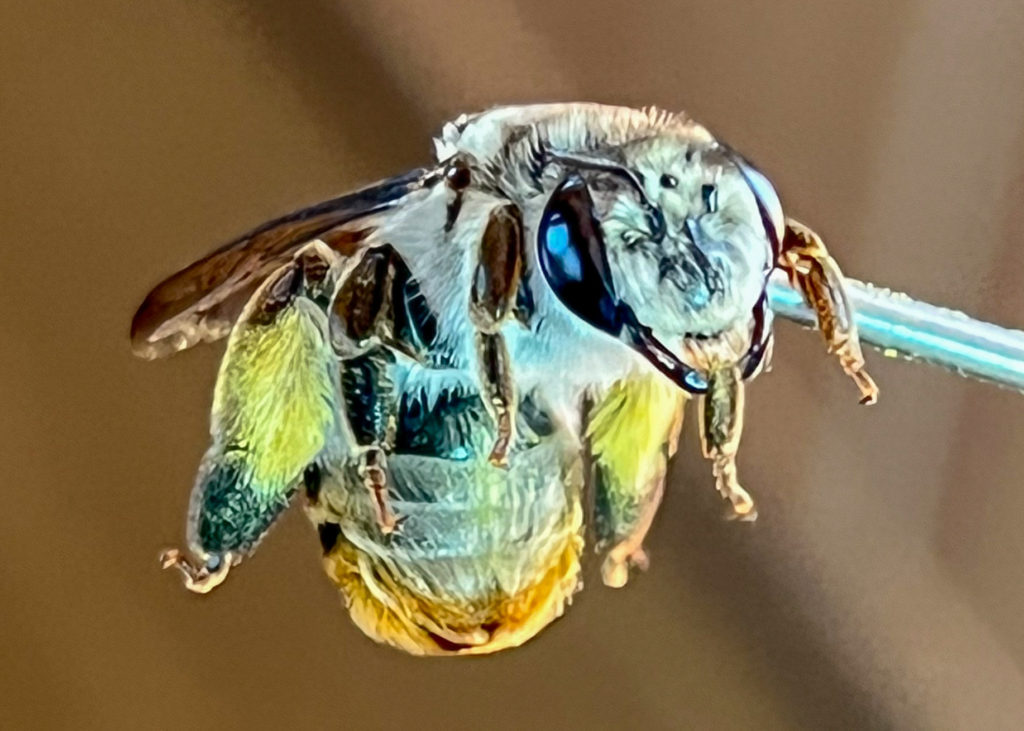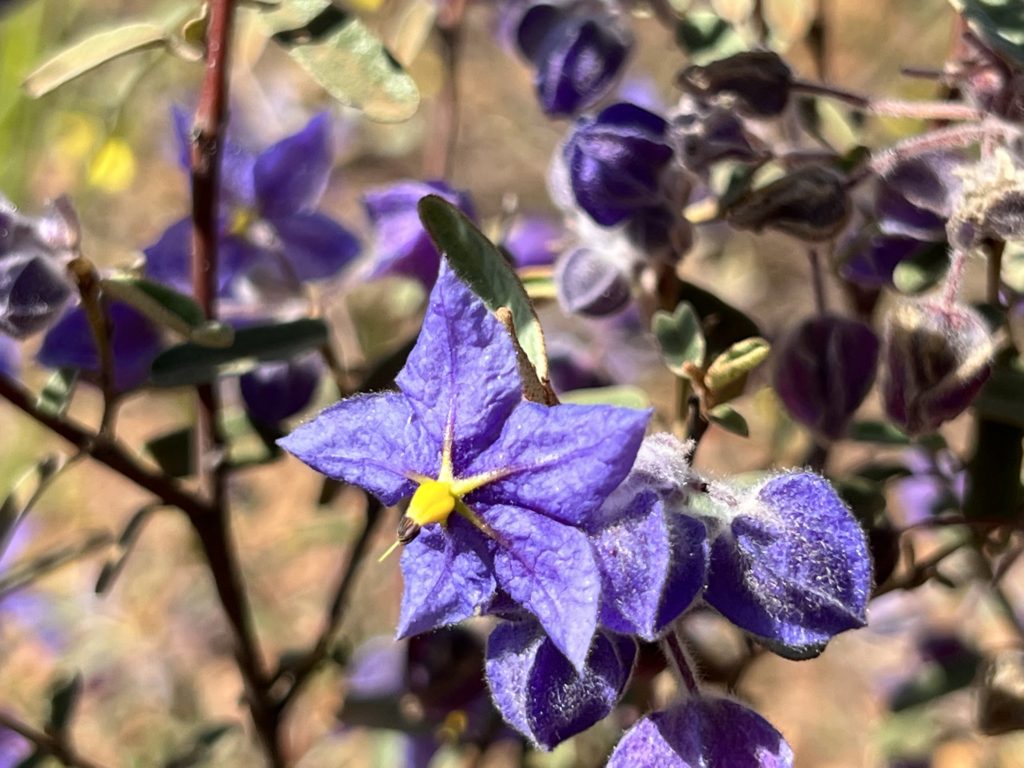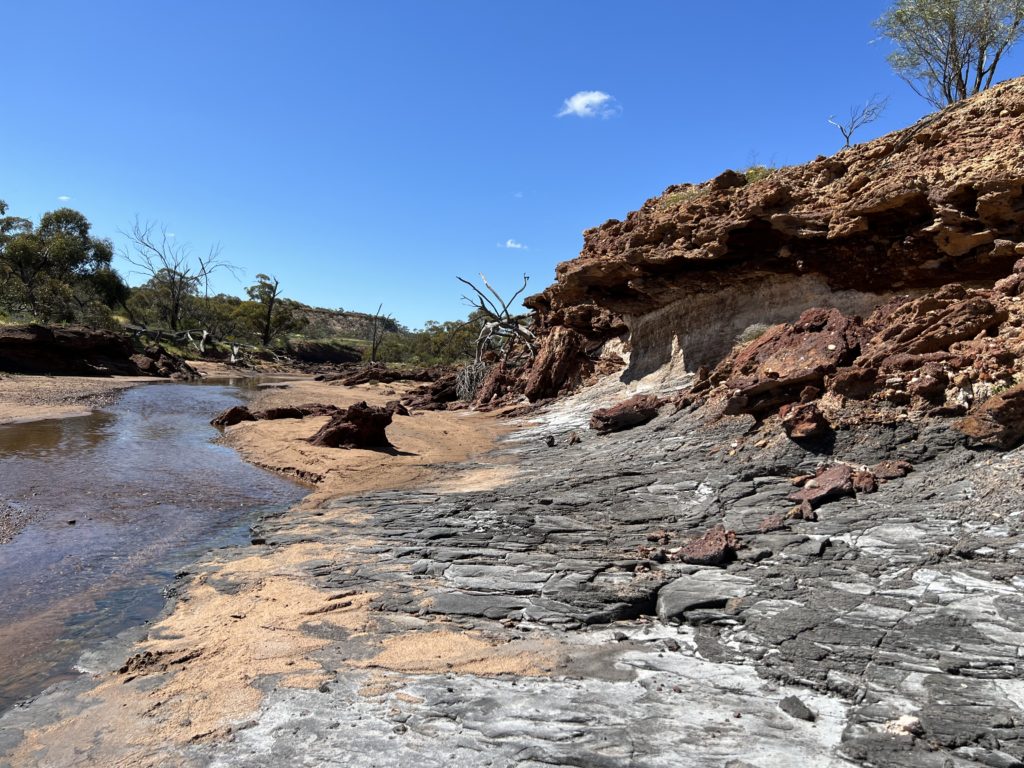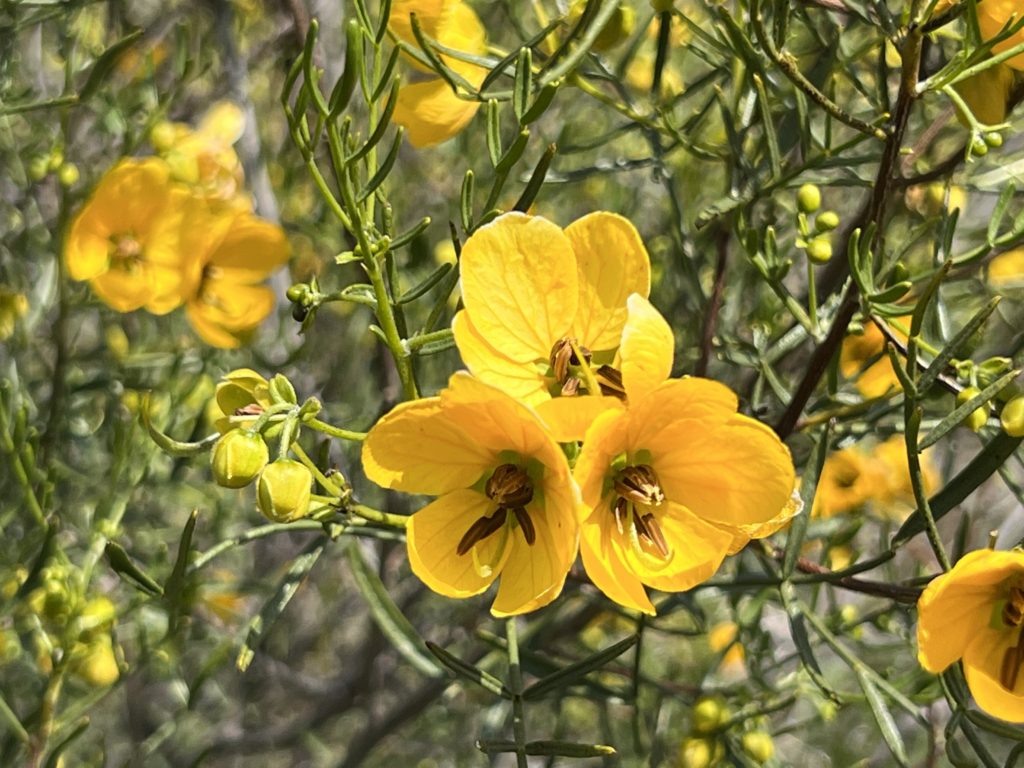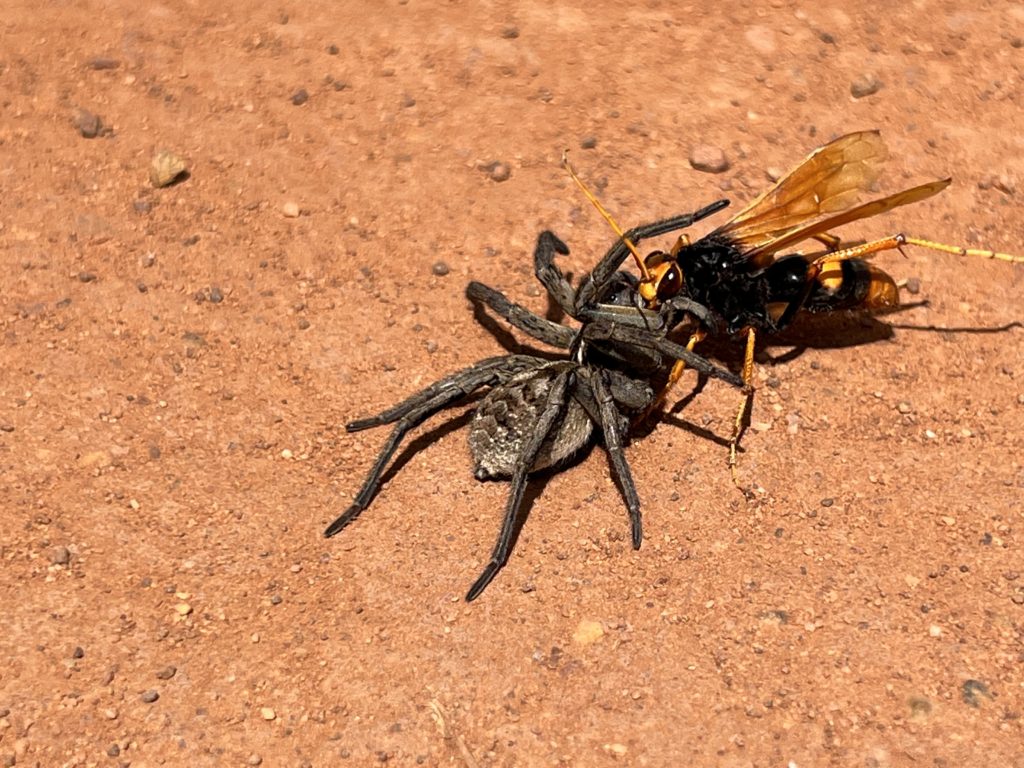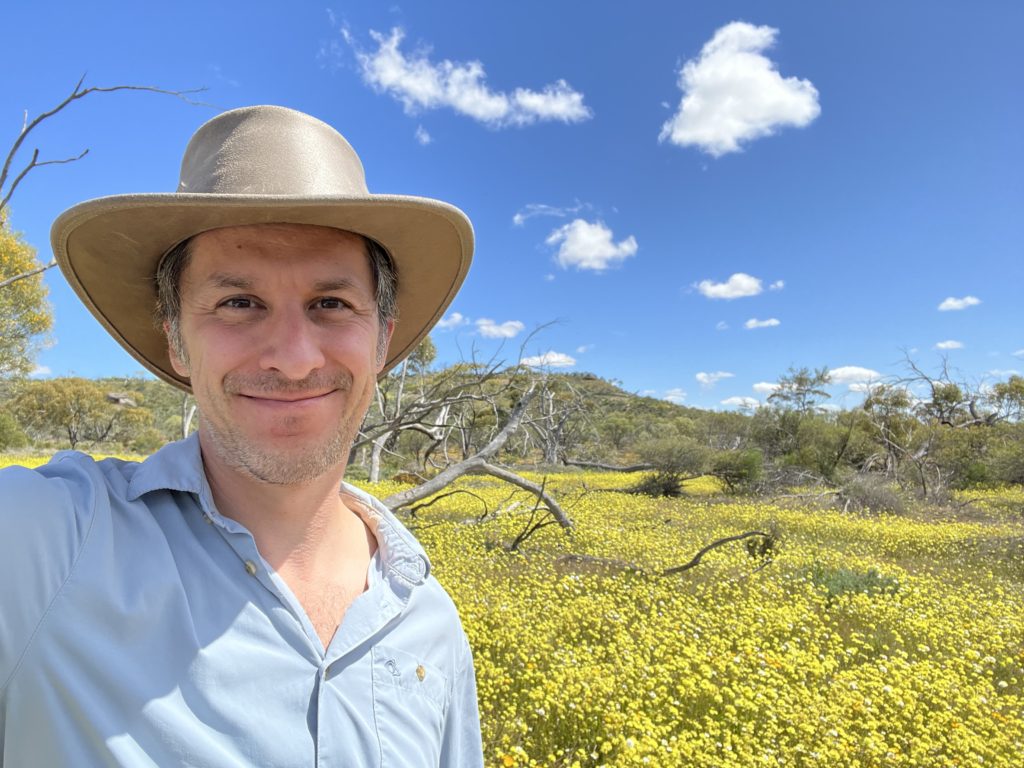26 September. We wake up in our campsite in the Capricorn Caves. Outside, the brush turkey waits for us hoping for a food scrap. First thing in the morning we walk to the caves and on the way we found a Solanum vine that I last saw in Mexico. This is Solanum seaforthianum, a Brazilian vine that has found a way to travel the world on the wings of well intentioned gardeners that prize their beautiful lilac flowers, which appear in generous bunches as the plant climbs any available surface. It has somehow made it to eastern Australia and appears to be doing fine with plenty of fruits. This is the first time we see this invasive plant in this trip, but probably not the last. I cannot find any other previous records of this species in iNaturalist, the image-recognition app that has become our good companion for scouting potential sampling sites of buzz pollinated plants. No bees in this invasive vine though. Near the caves we study a colony of stingless bees that a local meliponiculturist (a bee farmer of stingless bees) has placed in the area. The tiny bees (probably Tetragonula sp.) are busy guarding the entrance to their wooden home.
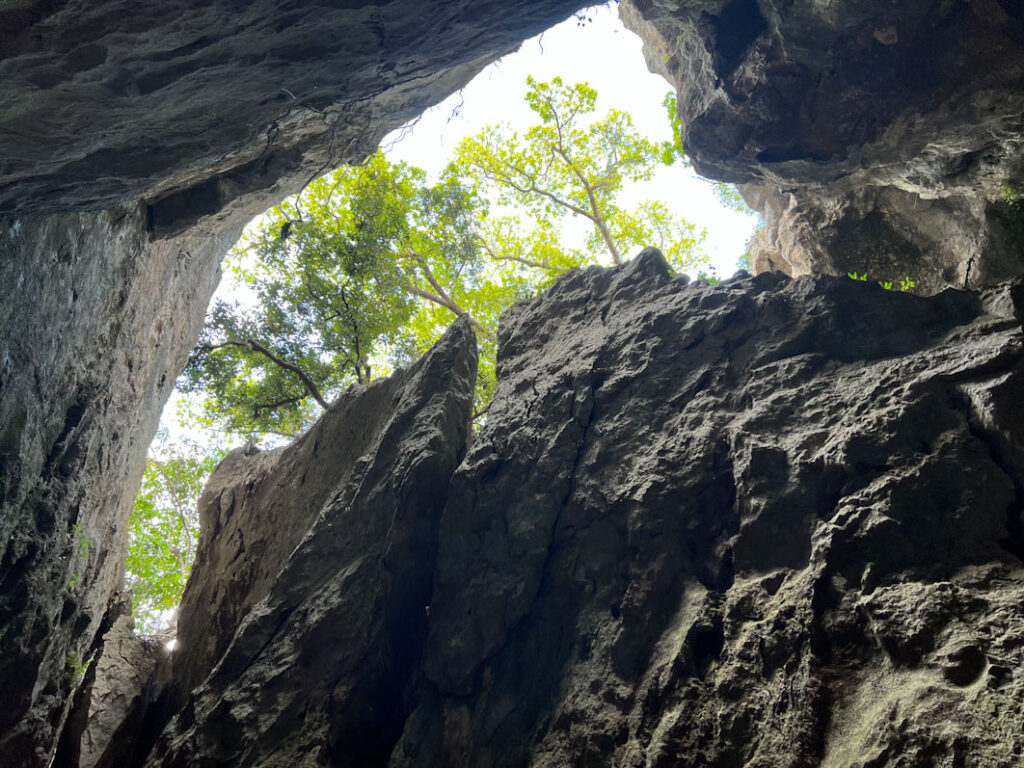
The exploration of the caves is amazing, if too brief. These rare karstic caves are above ground, not below, as they gorge the mountain and they are effectively dry inside with only rainwater penetrating them in the rainy season. Inside, colonies of ghost bats and other bat species call in the dark chambers outside of the reach of tourist lights. The caves were discovered by Norwegian farmers in the late 1800s, and became the first touristic attraction of Queensland. They have also yielded some great fossils of marsupial lions and other fantastic beasts.
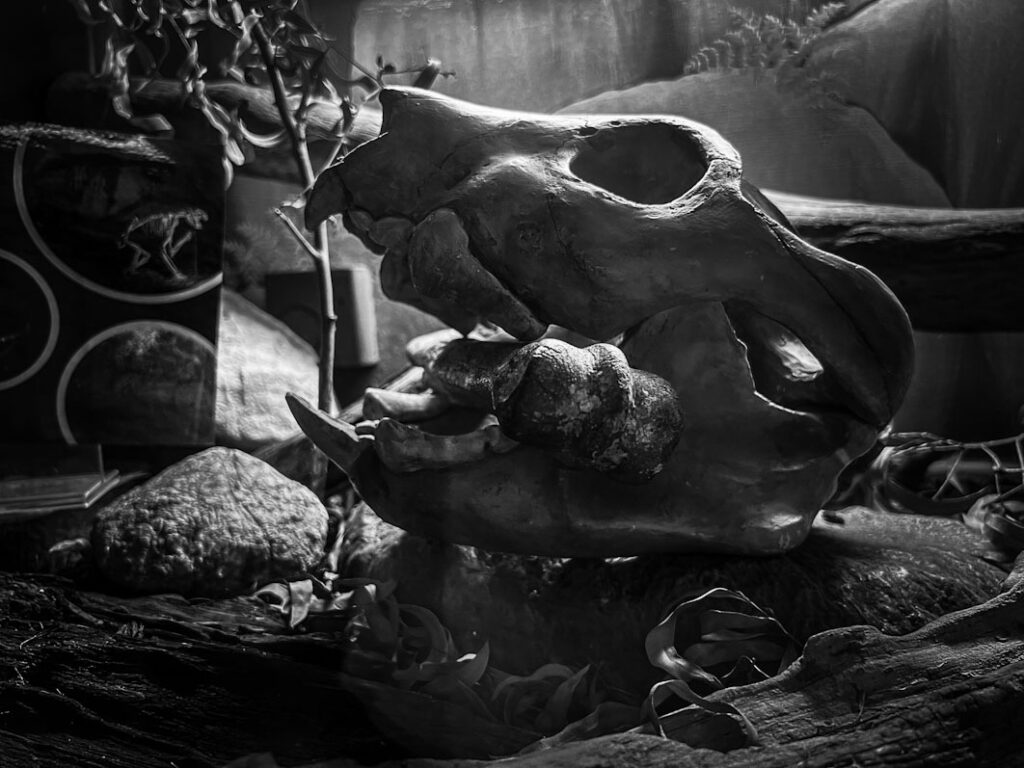
After leaving the Caves, we head up straight north. We want to reach beyond Mackay before the end of today. The goal is to spend the night in Eungella National Park, 380 km north from here. The drive is long but smooth. The vegetation changes little until the cane fields appear. Increasing in coverage as we move north, before we reach Mackay they have become monstrous. The last push west of Mackay to the mountains where the Eungella park is perched, is a continuous field of sugar cane and mills. A narrow train track will help moving tons of sugar cane during harvest time. The mill churns out sweet smoke from gigantic chimneys. Mechanised bands carry broken sugar cane across the road and above our heads.
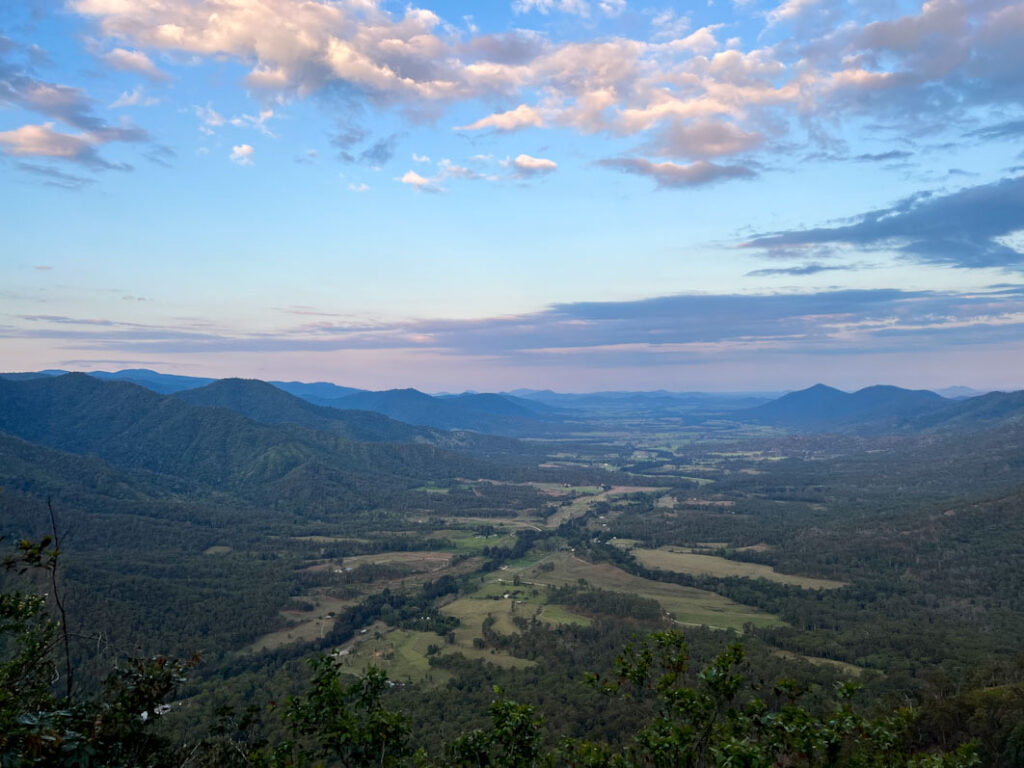
As we reach the base of the Eungella mountains a dramatic and most incredible change takes place. The monocultures yield to a brutal explosion of plant diversity as the land becomes steeper and more inaccessible to farming. The hills are soon covered by dense, dark green vegetaion, eucalyptus and palms coexist, and when we reach the top, massive tree ferns appear. The montane tropical forest is loaded with vines and epiphytes and the amazing elk-ferns reach massive proportions growing in every tree. It is getting dark but we stop in the Sky View to admire the valley far below and to immerse ourselves in the montane tropical forest.
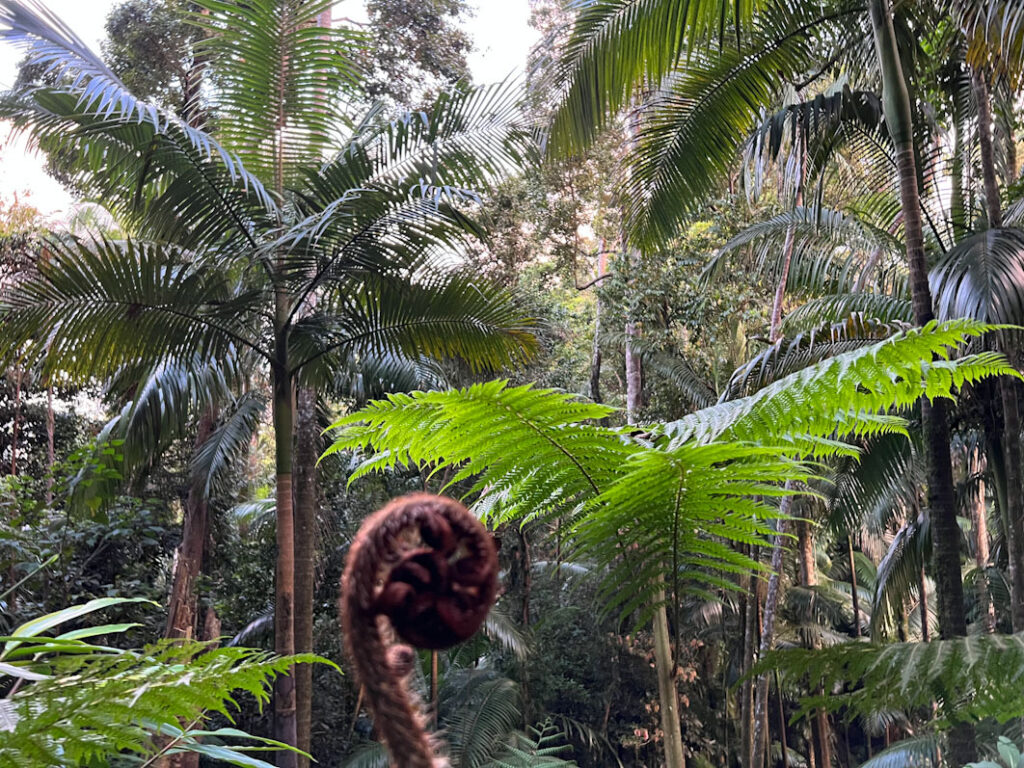
Now is dark and we decide we will not be able to reach the campsite near the Eungella dam. We pull over near a visitor centre and we find a room available for the night. Reluctantly, we move for a night to this cabin, but have dinner in the Buzz Bus anyway.
At night, I take my headlamp and walk to the Broken River, where we have been told the mysterious platypus can be seen. This is not the time of the day to find platypus, but I go there to check what other things I might be able to spot. A few minutes into my night walk, I hear noise in the bush. I slowly move the beam of my headlamp and see the strangest creature staring at me. The size of a racoon, grey short fur, a naked tail and a funny curved long snout. Some type of possum that shies away and disappears among the leaves. Then, in a grassy plain, a pair of bright eyes reflect the beam of my headlamp. A small wallaby assesses my every movement and when it decides I am too close, escapes with funny, substantial jumps and into the forest. I see another two of these small wallabies. When I reach the river, I see a golden male frog mating with a much larger dark green female. They are hypnotised by the light and the three of us stare at each other for a while. Later I return to the room and talk with Daniel about the amazing Australian fauna around us. Tomorrow we want to wake up early to look for a platypus before heading out to search for more bees.
